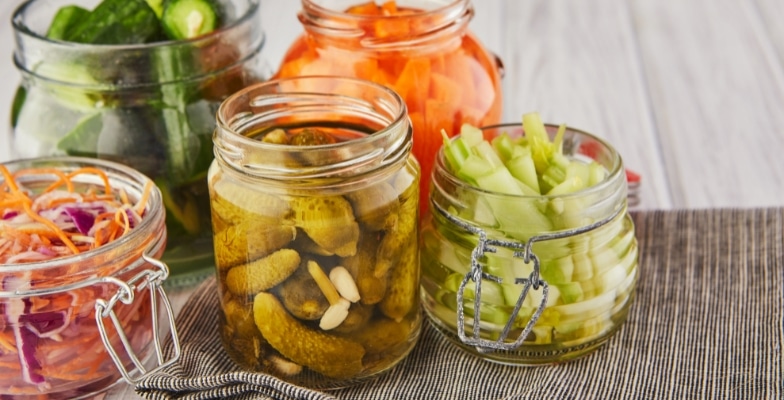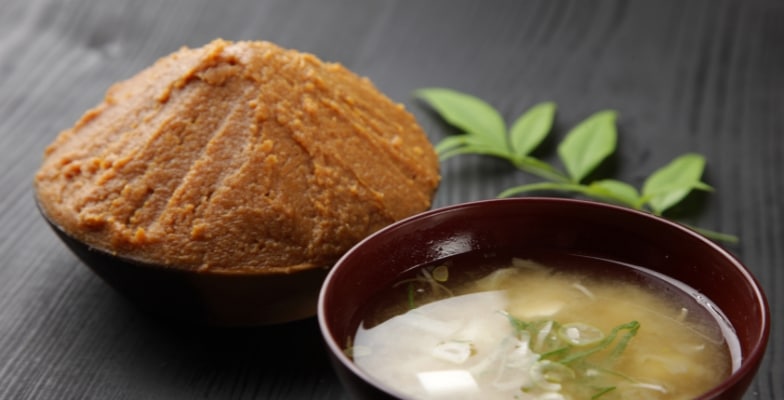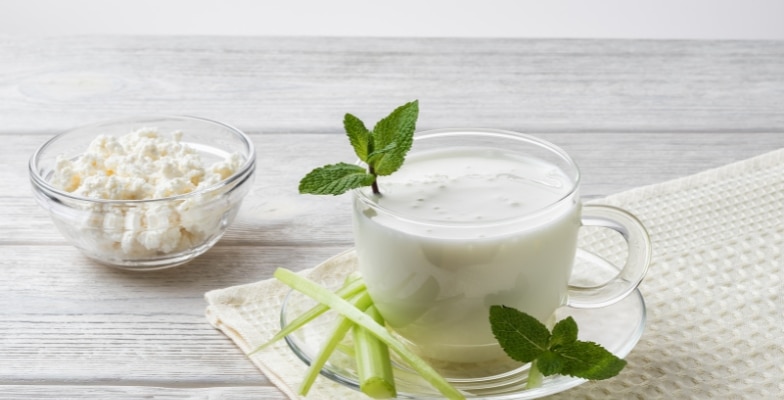What Are Cruciferous Vegetables? | Cruciferous Vegetable Benefits
- Introduction
- What Are The Cruciferous Vegetables?
- Cruciferous Vegetables List
- Health Benefits Of Cruciferous Vegetables
- Side Effects
- Conclusion

We know that 70% of diseases are related to diet, and the food choices we make today will impact our health in the future. A diet that includes sufficient plant-based foods can help fight or reduce conditions like obesity, coronary artery disease, high blood pressure, diabetes, and many types of cancer.
We have enough scientific research to show that the addition of vegetables to our diet protects our environment and our health.
Introduction
Cruciferous vegetables are fiber-rich and low in calories, keeping us full and satisfied without overeating. They are immensely popular as ingredients in green smoothies and fresh vegetable juices. Dr. Joel Fuhrman, an American celebrity nutritionist who advocates a nutrient-dense diet, devised a simple formula for good health.
Health = Nutrients/Calories.
Dr. Fuhrman created the ANDI (Aggregate Nutrient Density Index) to show how popular foods stack up in micronutrient density per calorie. The more nutrient-dense food you consume, the more satisfied you will be with fewer calories. 1https://www.drfuhrman.com/content-image.ashx?id=73gjzcgyvqi9qywfg7055r This article will tell you all you need to know about cruciferous vegetables.
What Are The Cruciferous Vegetables?
Cruciferous or Brassica vegetables come from plants in the Cruciferae or Brassicaceae family. They are native to Europe, the Mediterranean, and Asia, desiring a more temperate climate for the best production.
The name ‘cruciferous’ is an informal classification for the mustard family members and comes from the Latin Cruciferae, meaning ‘cross-bearing’ because the plant’s four petals resemble a cross.
Cruciferous vegetables are rich in nutrients, including fiber, several carotenoids like beta-carotene, lutein, zeaxanthin, vitamins C, E, and K, folate, and minerals. Cruciferous vegetables are unique as they are rich sources of sulfur-containing compounds and glucosinolates, which give them a bitter or spicy taste and intense aroma.
About 40 types of cruciferous vegetables are consumed worldwide, including broccoli, Brussels sprouts, cabbage, cauliflower, collard greens, kale, kohlrabi, mustard, rutabaga, turnips, bok choy, and Chinese cabbage-all from the Brassica genus family.
Although not in the Brassica genus, arugula, horseradish, radish, wasabi, and watercress are also cruciferous vegetables.
Cruciferous Vegetables List
Here Are Some Of The Most Common Cruciferous Vegetables
Arugula
Arugula or rocket leaves are tangy or a bit bitter. They are rich in vitamins K and C, calcium, nitrates, and polyphenols. Arugula is usually consumed in salads and may help reduce the risk of cancer, osteoporosis, and diabetes and improve heart health.
Bok Choy
Bok choy, or Chinese white cabbage, is low in calories and a good source of fiber, vitamins C, K, A, E, folate, and selenium. It has anti-cancer qualities, improves immunity, heart health, and bone health, and reduces blood pressure and inflammation.
Broccoli
Broccoli is low in calories and a rich source of vitamins K and C, folate, potassium, and antioxidants. Apart from cancer prevention, broccoli may boost immunity, improve bone and skin health, and reduce inflammation.
Brussels Sprouts
Brussels sprouts are low in calories, a good protein source, a rich source of calcium, the antioxidant ALA, and vitamins K and C. Consuming them may reduce the risk of certain cancers and diabetes and improve bone and eye health.
Cauliflower
Cauliflower is a popular low-calorie, gluten-free alternative to rice and flour. There are white, green, purple, and orange varieties. Cauliflower is an excellent source of vitamins and phytochemicals. Consuming it may strengthen bones, boost the cardiovascular system, and help prevent cancer.
Kale
Kale is a famous green leafy vegetable rich in dietary fiber, vitamins C and K, calcium, iron, and antioxidants. It is said to improve gut health and blood pressure and protect against type 2 diabetes and cancer.
Cabbage
Cabbage is low in calories and a good source of vitamins C and K, magnesium, folate, and antioxidants. It’s available in green and a more nutrient-dense purple. It may help protect against radiation, prevent cancer, and reduce heart disease risk.
Watercress
Watercress is an exotic dark leafy green that grows in natural spring water. It is rich in minerals, vitamins, antioxidants, and nitrates. It aids in preventing and treating cancer and diabetes, lowering blood pressure, and improving bone health.
Health Benefits Of Cruciferous Vegetables
Cancer Prevention
Cancer is a global health challenge, but it may be possible to prevent or delay it by consuming a well-balanced diet that contains specific vitamins and minerals. Cruciferous vegetables are a primary source of essential vitamins and minerals, and sulfur-containing phytochemicals have an anti-cancer effect.
Many studies found inverse associations between cruciferous vegetable intake and risk of bladder, breast, colorectal, gastric, lung, ovarian, pancreatic, prostate, and renal cancers. 2https://pubmed.ncbi.nlm.nih.gov/24204579/, 3 https://pubmed.ncbi.nlm.nih.gov/22121852/, 4https://pubmed.ncbi.nlm.nih.gov/25889229/, 5https://pubmed.ncbi.nlm.nih.gov/25740748/
Some scientists suggest that dietary phytochemicals or plant chemicals in cruciferous vegetables such as broccoli may play a role in green chemoprevention, with the idea that consumption of whole plant foods or their pure extracts can prevent the growth of cancer. 6https://www.ncbi.nlm.nih.gov/pmc/articles/PMC5842175/
Impact On Heart Health
Many nutrients and phytochemicals in cruciferous vegetables that include fiber, potassium, folate, and isothiocyanate, may help protect against coronary heart disease. 7https://pubmed.ncbi.nlm.nih.gov/17823442/
A study published in the American Journal of Clinical Nutrition followed 134,796 adults over an average of 10 years and found a higher intake of vegetables, especially cruciferous vegetables, was associated with a lower risk of death from heart disease. 8https://www.ahajournals.org/doi/10.1161/JAHA.117.008391, 9https://pubmed.ncbi.nlm.nih.gov/14525683/, 10 https://www.ncbi.nlm.nih.gov/pmc/articles/PMC3127519/
Total Health
The National Cancer Institute suggests that the glucosinolates in cruciferous vegetables help protect DNA from damage and have antiviral, antibacterial, and anti-inflammatory effects. 11https://pubmed.ncbi.nlm.nih.gov/24630682/
Cruciferous veggies, especially broccoli and brussels sprouts, contain a compound sulforaphane, which can help protect the brain, and the eyes, reduce nasal allergy inflammation, and the risk of type 2 diabetes. 12https://www.ncbi.nlm.nih.gov/pmc/articles/PMC6885086/, 13https://www.ncbi.nlm.nih.gov/pmc/articles/PMC5672987/, 14https://www.ncbi.nlm.nih.gov/pmc/articles/PMC5225737/ These vegetables work from the inside out for the heart, reducing inflammation and even helping in weight management.
Side Effects
A common side effect of eating cruciferous vegetables is excess gas formation caused by fiber fermentation in the large intestine. These vegetables need to be adequately chewed to avoid flatulence.
We recommend people with thyroid problems consult their physician before starting to consume cruciferous vegetables. 15https://www.ncbi.nlm.nih.gov/pmc/articles/PMC4740614/
When consumed raw, the digestion of cruciferous vegetables in the intestines releases goitrogens, increasing iodine’s need and impacting the thyroid gland. 16https://www.ncbi.nlm.nih.gov/pmc/articles/PMC3496161/
Conclusion
Cooking methods can impact the bioavailability and consumption of glucosinolates and sulforaphane in cruciferous vegetables. To get favorable results, never overcook them as that not only impacts nutrition but also causes the vegetables to produce a strong odor and look unattractive.
It is better to chop raw cruciferous vegetables for a few minutes before cooking and preferably cook by steaming, microwaving, or stir-frying with ghee or coconut oil on medium heat.
There are many ways to incorporate or replace ingredients in old recipes with super-nutritious cruciferous vegetables. One can include them in salads, stir-fries, soups, pizza crusts, and rice. We will need another article to explore various recipes.
What do you think about this article? Have any questions? Let me know in the comments below!

Skill-Based Education.
Global Recognition.
Powerful Community Building
Secure a certificate of completion in as little as a day by graduating from one of our free courses.
Get Access to Our Free Courses. No Credit Card Required.

Fabulous Body Membership
Your All-Access Pass to A Fabulous Body & A Rewarding Career
25+ Certificate Courses & Programs, All Included
15 Day Free Trial, 100% Money-Back Guarantee
About Kamini Thakar
Kamini is a very skilled writer/content creator. As a part of Fabulous Body for years, she has authored many articles really proving her prowess in acquiring and presenting knowledge about various health & nutrition topics.










